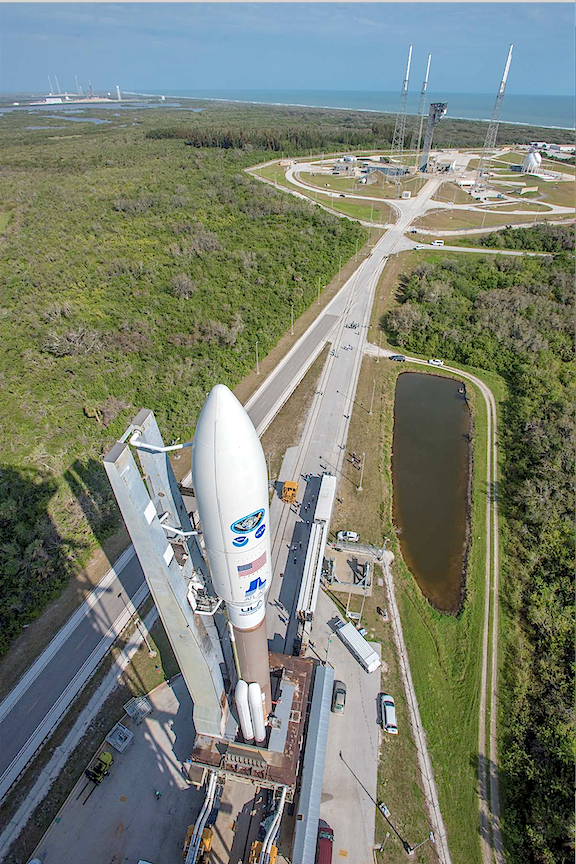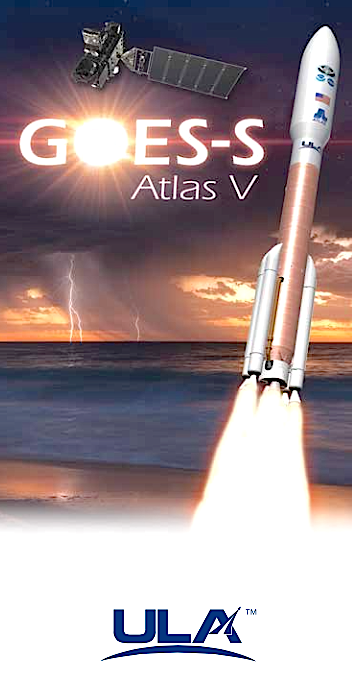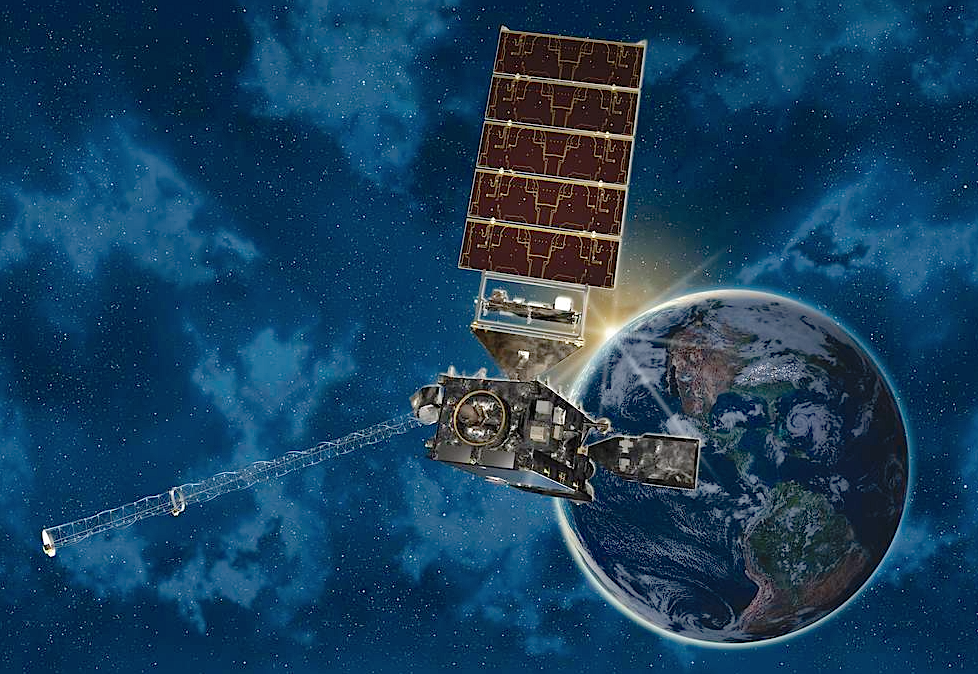Countdown to Tomorrow's Launch ... ULA's Atlas V is Ready for What GOES Up on Mission for NASA and NOAA

(Cape Canaveral Air Force Station, Florida, February 28, 2018) A ULA Atlas V rocket carrying the GOES-S mission for NASA and NOAA is rolled from the Vertical Integration Facility to the launch pad at Cape Canaveral's Space Launch Complex-41. Photo courtesy of ULA.
All ready for Thursday, March 1 as the appointed date for the upcoming launch of...
the ULA Atlas V GOES-S mission for NASA and NOAA. The mission is set to lift off on an Atlas V rocket on Thursday, March 1 from Space Launch Complex-41 at Cape Canaveral Air Force Station in Florida.
Wednesday’s forecast shows an 80 percent chance of favorable weather conditions for launch. The launch time is 5:02 p.m. ET.
Launch Forecast Summary:
- Overall probability of violating weather constraints: 20 percent
- Primary concerns: Cumulus Clouds, Ground Winds
- Overall probability of violating weather constraints for 24 hour delay: 20 percent
- Primary concern: Cumulus Clouds
Launch webcast available
Live launch coverage will begin at 4:30 p.m. ET on March 1.
The mission: A United Launch Alliance (ULA) Atlas V 541 rocket will deliver the GOES-S spacecraft, the second in the Geostationary Operational Environmental Satellite-R series, into an optimized geosynchronous transfer orbit. Liftoff will occur from Space Launch Complex-41 (SLC-41) at Cape Canaveral Air Force Station (CCAFS), Florida.

GOES satellites, a collaborative effort between NOAA and NASA to develop, launch and operate the spacecraft, have played a vital role in weather forecasting, storm tracking and meteorological research since the first GOES was launched on a Delta rocket in 1975. ULA’s Atlas and Delta rockets have launched every GOES satellite.

This illustration depicts NOAA’s Geostationary Operational Environmental Satellite-S (GOES-S), which is scheduled to launch March 1 from Cape Canaveral Air Force Station in Florida. NASA oversees the acquisition of the spacecraft, instruments and launch vehicles for the GOES-R Series program. Credits: Lockheed Martin
GOES-S will be operated from a vantage point 22,300 miles above Earth to cover the western United States, Alaska and Hawaii, providing unprecedented advancements in the clarity and timeliness of observations over the region. The satellite’s instruments will collect vivid imagery every 30 seconds and detailed atmospheric measurements to monitor weather patterns and severe storms. Once operational, the satellite will be renamed GOES-West to track storm systems, lightning, wildfires, dense fog and other hazards that threaten the western U.S.
It will work in tandem with the GOES-R satellite that was successfully launched by an Atlas V on November 19, 2016, and now operates as the GOES- East observatory.
The next-generation GOES-R series, built by Lockheed Martin, scans the Earth five times faster at four times the image resolution, with triple the number of data channels than previous GOES satellites for more reliable forecasts.
Shaanxi Probecom Microwave Technology Co.,LTD (abbreviated as Probecom), was founded in 2002, located in International Trade and Logistic Park in Xi’an, we are mainly engaged in the design and manufacture of all types of satellite communication Earth Station Antenna, VSAT Antenna, Ka Series Antenna, Portable Flyaway Antenna, RxO/TVRO Antenna, SNG Antenna, On-the-Move Antenna, Remote Sensing & Telemetry Antenna, Meteorological Radars, High Power and Ultra Wideband Amplifiers (SSPA & TWTA), Microwave Components as well as the related Antenna Control & Tracking System.

